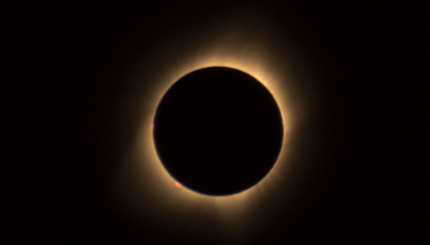On April 8, 2009, Jews will celebrate the 206th anniversary of the creation of the sun, as calculated by the rabbis. Birkat Hahammah, the Blessing of the Sun, is a once-every-28-year occasion, when Jews gather at sunrise to praise God for the life-giving energy of the sun, and recite the blessing: “Blessed are You, God, who continually does the work of creation.”
Rabbinic Calculations
 According to the first chapter of Genesis, Wednesday, the fourth day of the week, is the day of the sun’s creation. The rabbis thought it fitting that the sun’s celebration would always fall on a Wednesday. The question for the rabbis was, which Wednesday? The best moment they imagined was that of the vernal equinox. At that moment the sun is due east, its celestial home, and thus in its imagined birthplace.
According to the first chapter of Genesis, Wednesday, the fourth day of the week, is the day of the sun’s creation. The rabbis thought it fitting that the sun’s celebration would always fall on a Wednesday. The question for the rabbis was, which Wednesday? The best moment they imagined was that of the vernal equinox. At that moment the sun is due east, its celestial home, and thus in its imagined birthplace.
But how did the vernal equinox (generally considered to be March 21, the northern hemisphere’s beginning of spring) slide to April 8?
The rabbis calculated the solar year as being 365 1/4 days long. While that is very close indeed, it is still off by about 11 minutes. Add that cumulative discrepancy to a fixed date event, and compound that with 10 days inserted in the calendar by the Gregorian reform in 1582, and you have a mismatch between the occasion of the equinox and the date of Birkat Hahammah.
With your help, My Jewish Learning can provide endless opportunities for learning, connection and discovery.
But this celebration is not so much technical as it is symbolic.
Celebrating Nature
Jews are not strangers to commemorating nature. The Torah commands us to celebrate the appearance of the new moon (Rosh Chodesh). During Temple times, Jews brought special sacrifices and there are a fistful of psalms, special prayers, and a Torah reading added today to mark this celestial event that helps us measure time.
We also pray for rain and dew in the Amidah and celebrate harvests at Shavuot and Sukkot. We praise God for turning night into day and day into night. In the daily morning blessings we acknowledge the rooster for crowing at dawn. But none of the Jewish celebrations of nature is directly about the sun, except Birkat Hahammah.
An Infrequent Occurrence
Why this omission, and why would the rabbis invent such a rare occasion to fill this gap? By pegging Birkat Hahammah to a 28-year cycle, the rabbis certainly upped the chances of the ritual being overlooked or downplayed.
Perhaps that is just the point. From biblical times to this very day, the greatest theological challenge to God has been nature. The amazing workings of the natural world can be used as an argument for God’s existence, but the study of nature–or science–also threatens traditional beliefs.
Concern about misplaced belief in the power of nature agitates some of the faithful. The fear of nature usurping God’s role as Creator is what forced the Inquisition to demand that Galileo recant his statement that the earth moves. And it is this fear that makes some members of the contemporary religious community nervous about environmentalism.
Perhaps the rabbis, in their struggle both to acknowledge the awesome, life-giving power of nature and at the same time contain any misplaced blasphemy that could allow nature to vie with God, decided to compromise with an infrequent, yet deliberate, sun celebration.
Creator Before Creation
Let’s celebrate the Creator of this awesome orb, they say, but only once every 28 years. Let’s set this celebration to the precise moment, day, and place of creation, as if to say, it is only because God made this gift that we have it at all. To schedule this celebration at the moment of the sun’s creation is to emphasize the creation of the sun over the sun itself.
The word “sun” does not even appear in the blessing. Nor is this blessing unique to this moment. It is said whenever we see lightning, grand mountains, or shooting stars, or even a lovely sunrise or sunset any day of the year.
The sun, this celebration seems to be telling us, is a remarkable force in the world. But it is just one piece of God’s remarkable world. This celebration, then, is a brilliant exercise in containment. At one and the same moment, it both extols and subdues the sun, and elevates and contains nature.
A Contemporary Message
That being said, Birkat Hahammah of 2009 gives us the remarkably poignant and timely opportunity to celebrate the message and gifts of the sun, and all the renewable energy that it creates: solar power (direct and indirect), wind energy, ocean energy, and biomass energy.
Solar energy is a crucial source of renewable energy, and an essential balm for healing our environmental misdeeds. What this Birkat Hahammah allows us to do is reconnect with one fundamental message of the Torah. The reason, we are told, that humanity was created: to tend carefully to the bountiful, fragile goodness of the world. Its continued health depends on us. And we on it.
Torah
Pronunced: TORE-uh, Origin: Hebrew, the Five Books of Moses.


